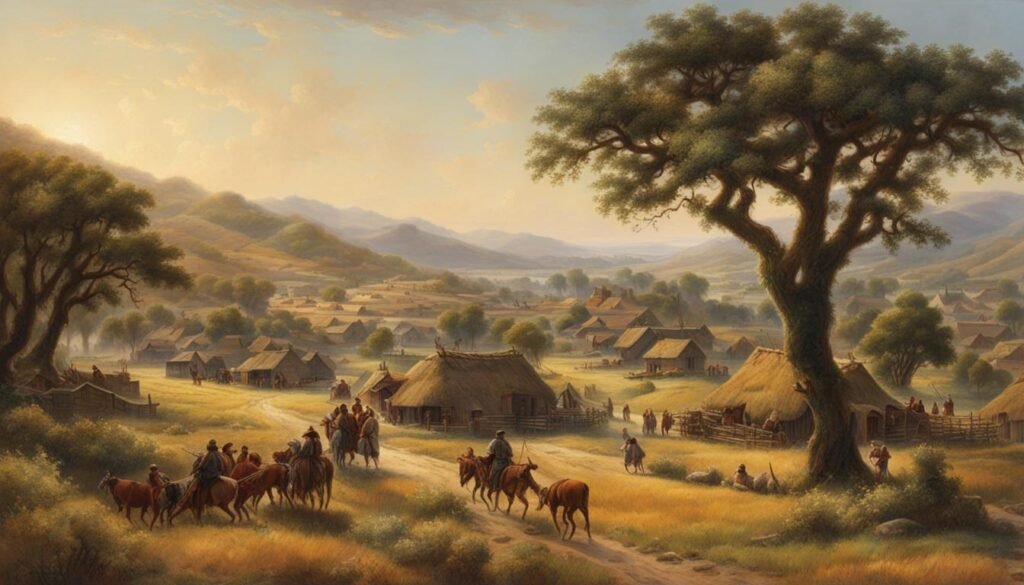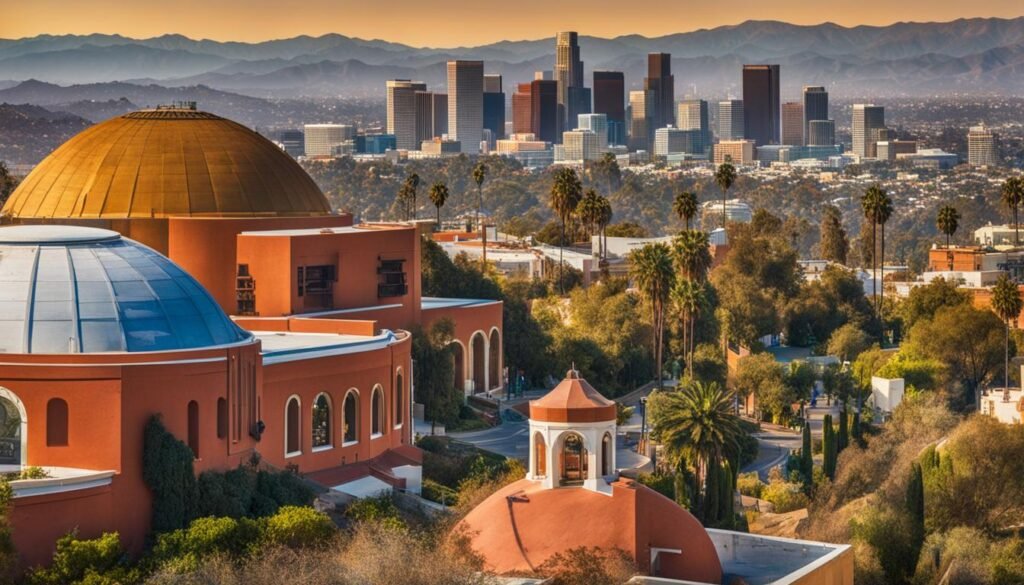In this article, I invite you to embark on a captivating journey through the life of nature, as we unveil the wonders of Earth’s diverse ecosystems. From the lush rainforests teeming with wildlife to the vast oceans brimming with marine life, our planet is a treasure trove of natural beauty and biodiversity.
As we delve into the exploration of national geographic nature, we will discover the intricate web of life that exists within each natural ecosystem. From the delicate balance of flora and fauna to the essential role of biodiversity in maintaining ecological equilibrium, nature has much to teach us about the importance of wildlife conservation, environmental sustainability, and nature preservation.
Through this journey, we will also uncover the significance of sustainable living and environmental awareness in preserving our natural resources and protecting the planet for future generations. We will explore the impact of human actions on the delicate balance of ecosystems and how eco-friendly initiatives can contribute to the preservation of our precious natural heritage.
Join me as we appreciate the awe-inspiring beauty of nature, learn about the importance of biodiversity preservation, and discover how we can make a positive impact by embracing green living and fostering environmental awareness.
Key Takeaways:
- Earth’s ecosystems are diverse and teeming with biodiversity, offering awe-inspiring natural beauty.
- Wildlife conservation, environmental sustainability, and ecological balance are crucial for preserving the life of nature.
- Sustainable living and environmental awareness play a significant role in protecting our planet.
- Eco-friendly initiatives contribute to the preservation of biodiversity and the natural beauty of our surroundings.
- Appreciating and understanding nature helps foster a deeper connection with the environment and encourages conservation efforts.
The Impact of Ecosystems on Earth’s Biodiversity
As the United Nations develops a post-2020 global biodiversity framework for the Convention on Biological Diversity, attention is focusing on how new goals and targets for ecosystem conservation might serve its vision of “living in harmony with nature”. To conserve biodiversity and sustain ecosystem services, understanding ecosystem responses to environmental change and management is crucial.
However, there is a lack of a globally consistent classification of ecosystems that reflects functional responses to change and management. The International Union for Conservation of Nature (IUCN) Global Ecosystem Typology aims to address this gap by providing a conceptually robust and spatially explicit approach for generalizations and predictions about ecosystem functions, biota, risks, and management remedies.
This framework will support ecosystem-specific management, globally standardized risk assessments, and progress on the post-2020 global biodiversity framework.

Ecosystems play a vital role in maintaining biodiversity and providing essential services to the biosphere. Understanding their responses to environmental change and implementing effective management remedies are crucial steps towards achieving conservation targets and sustainability goals.
Rapid Reorganization of Global Biodiversity
A new study based on data from 239 studies and over 50,000 biodiversity time series reveals a fascinating insight into the rapid reorganization of global biodiversity. According to this study, almost 30% of all species are being replaced every 10 years, challenging previous beliefs and raising questions about the timeline for ecosystem recovery after mass extinctions.
The study’s findings contradict the notion that complex ecosystems took millions of years to develop after the Permian-Triassic mass extinction. Instead, fossil discoveries dating back 250.8 million years near the Guizhou region of China suggest that complex life reemerged just 1 million years after the catastrophic climate change event.
This discovery challenges our understanding of the speed at which global biodiversity can recover and adapt to drastic environmental changes. It highlights the resilience and potential for rapid reorganization within ecosystems, providing new insights into the complex dynamics of species turnover and the shaping of biodiversity time series.
Through extensive geochronological and geochemical evidence, the study unveils a fascinating picture of how life on Earth has adapted and thrived even in the face of catastrophic events. These findings shed light on the intricate relationships between species richness, ecosystem dynamics, and the ability of complex life to emerge, evolve, and persist throughout Earth’s history.
Species Turnover: A Driving Force for Biodiversity Change
The concept of species turnover, whereby species are continually being replaced, plays a critical role in shaping the biodiversity of our planet. As certain species decline or go extinct, new species emerge and occupy vacant ecological niches, resulting in ever-changing species compositions within ecosystems.
This constant flux of species turnover contributes to the dynamic nature of biodiversity time series and underscores the importance of understanding the mechanisms driving these changes. By comprehending the processes that influence species turnover, scientists can develop more effective strategies for conservation and management, ensuring the long-term sustainability of our planet’s rich biodiversity.
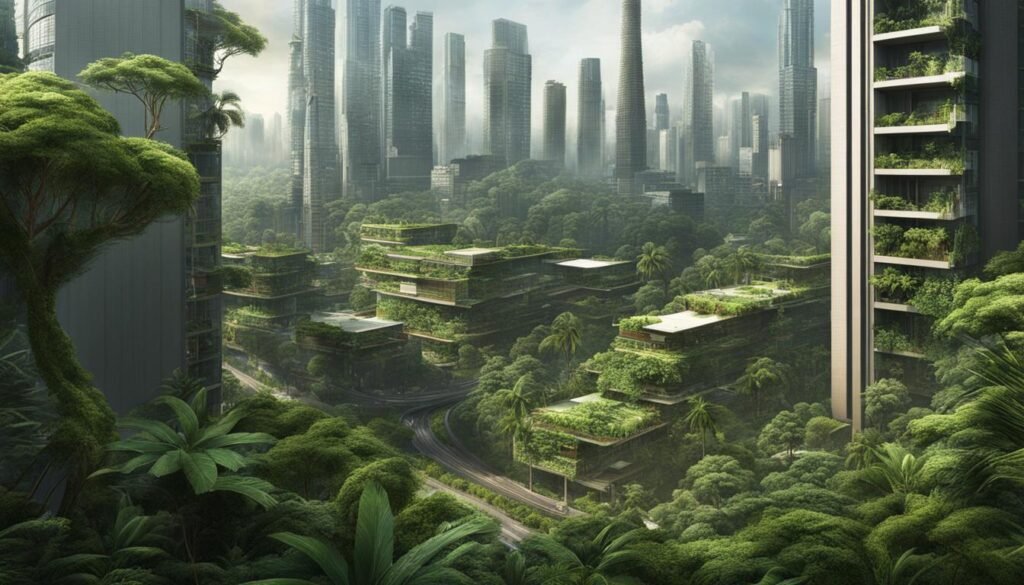
The Significance of Complex Life in Ecosystems
Complex life plays a pivotal role in shaping and maintaining the stability of ecosystems. These intricate interactions between different species and their environments contribute to the overall resilience and functionality of natural systems.
Contrary to previous beliefs, the study’s findings suggest that complex ecosystems can rapidly emerge even after catastrophic events. This challenges the notion that the recovery and development of complex life require millions of years, offering a new understanding of the adaptability and potential for rapid reorganization within Earth’s biodiversity.
By studying the geochemical evidence and fossil records from different periods in Earth’s history, scientists are able to unravel the mysteries of complex life and its role in shaping biodiversity time series. This knowledge allows us to appreciate the intricate web of life and the importance of preserving and protecting the diverse ecosystems that support it.
Complex Ocean Ecosystems after Mass Extinction
The discovery of fossils in the Guizhou region challenges the long-held belief that scorching hot ocean conditions prevented the development of complex life after the Permian-Triassic mass extinction. The fossils reveal an ocean ecosystem with diverse species forming a complex food chain, including plant life, boney fish, ray-finned fish, crabs, lobsters, shrimp, and mollusks. Radiometric dating of the rocks containing the fossils indicates that these complex ecosystems emerged much earlier than previously thought, contradicting the idea that simple species dominated the Earth for 10 million years post-extinction.
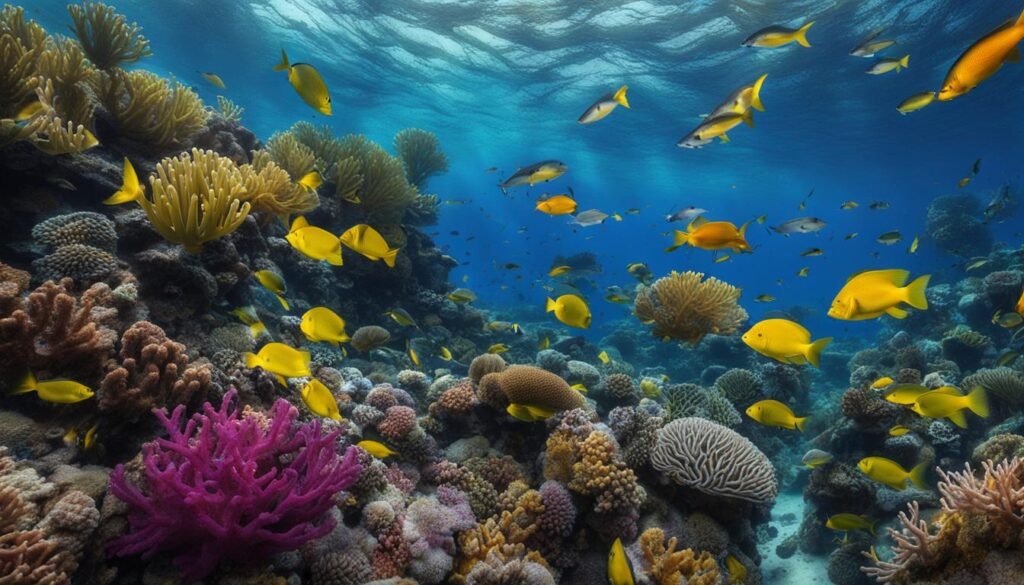
These fossil discoveries provide compelling evidence of vibrant and complex ocean ecosystems that thrived in the aftermath of the Permian-Triassic mass extinction. Contrary to previous assumptions, the oceans were not devoid of life and limited to simple species during this time. The existence of diverse species forming a complex food chain suggests that life rebounded more rapidly than anticipated.
Through radiometric dating, scientists have gained valuable insights into the timing of the emergence of complex ecosystems after the mass extinction event. This research has significant implications for our understanding of the recovery process and the resilience of life on Earth. It challenges the notion that catastrophic events inevitably lead to prolonged periods of impoverished biodiversity.
The Permian-Triassic Mass Extinction
The Permian-Triassic mass extinction, also known as the “Great Dying,” was one of the most devastating events in Earth’s history. Occurring approximately 252 million years ago, it resulted in the extinction of approximately 96% of marine species and 70% of terrestrial species. The causes of this mass extinction are still the subject of ongoing scientific research, but it is believed to have been triggered by a combination of intense volcanic activity, global warming, and changes in ocean chemistry.
Radiometric Dating and Unveiling Ancient Ecosystems
Radiometric dating is a powerful technique used by scientists to determine the age of rocks and fossils. It relies on measuring the decay of radioactive isotopes present in the materials being dated. By analyzing the ratio of parent isotopes to daughter isotopes, scientists can calculate the age of the specimen.
In the case of the fossils discovered in the Guizhou region, radiometric dating was crucial in establishing the timeline for the emergence of complex ocean ecosystems. The dating process allowed scientists to conclude that these ecosystems appeared much earlier than previously believed, challenging the conventional understanding of post-extinction recovery.
The discovery of these complex ocean ecosystems provides valuable insights into the resilience and adaptability of life on Earth. It demonstrates that nature has a remarkable ability to recover and thrive even in the face of catastrophic events. Understanding the processes that drive ecosystem recovery and the factors that contribute to the development of complex life forms is essential for informing conservation efforts and ensuring the long-term survival of biodiversity.
The Importance of Species Richness and Compositional Change
While species richness has been a common measure of biodiversity, it does not provide a complete understanding of how life on Earth is changing. The study on species turnover reveals that species are being replaced at a significant rate, indicating a reorganization of biodiversity rather than a decline. The presence of diverse and changing species compositions highlights the complexity of biodiversity change.
The reevaluation of early Triassic ocean conditions and the recognition of reorganization as a significant aspect of global biodiversity change are important for conservation planning and understanding the drivers of biodiversity change.

As we delve deeper into the complexities of life on Earth, it becomes evident that species richness alone does not provide a complete picture. The recognition of species replacement and compositional change as essential aspects of biodiversity allows for a more comprehensive understanding of the evolving ecosystems.
Conservation planning must take into account the dynamic nature of biodiversity change, acknowledging the continuous reorganization of species and the environmental factors driving these changes. By considering both species richness and compositional change, conservation efforts can be more targeted and effective in preserving the delicate balance of life on Earth.
Hotspots of Biodiversity Turnover
The study reveals that biodiversity turnover is not uniform across different regions, with certain areas, known as “hotspots,” experiencing faster species replacement than others. One notable hotspot for biodiversity turnover is found in tropical marine ecosystems, where reorganization rates are higher compared to terrestrial environments.
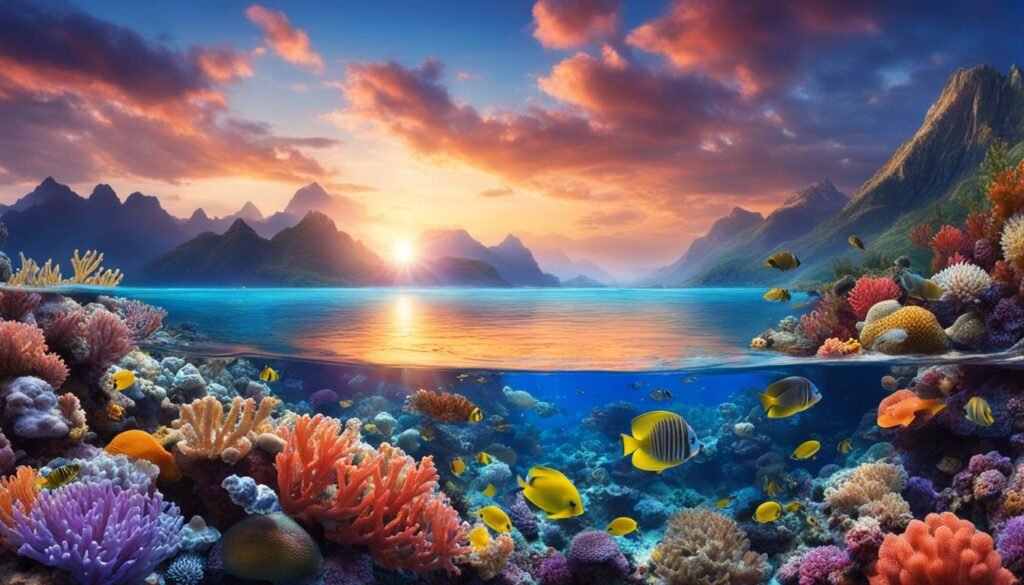
This higher turnover in marine species can be attributed to their sensitivity to swings in temperature and their ability to move more freely in the ocean environment. Temperature fluctuations in tropical waters create dynamic conditions that drive species turnover, resulting in a constant reshuffling of marine life.
However, while hotspots of biodiversity turnover are evident, further research is needed to fully understand the drivers behind this rapid species replacement. The implications of this turnover for biodiversity conservation in these hotspots are also areas that require more investigation.
Recovery and Adaptation in Changing Ecosystems
While the global biodiversity crisis is a cause for concern, the study also reveals that some ecosystems are recovering and adapting to changing conditions. This offers a glimmer of hope for the resilience and adaptability of our natural world.
Understanding the patterns of species replacement and the recovery of ecosystems is crucial for effective conservation planning. By mapping biodiversity change and identifying regions experiencing high rates of species richness or compositional change, we can target our conservation efforts more accurately.
Conservation planning allows us to prioritize the protection and restoration of ecosystems that are in dire need. By focusing on these areas, we can work towards restoring the balance and diversity of species within them.
It’s important to remember that change is a natural part of ecosystems. As species come and go, ecosystems go through a process of adaptation. Some species may thrive better in the face of changing conditions, leading to shifts in biodiversity.

This image showcases the adaptability and resilience of ecosystems in the face of changing circumstances.
By recognizing these patterns and trends, we can develop more effective strategies to protect and restore ecosystems. Our collective efforts can contribute to the long-term preservation and sustainability of Earth’s biodiversity.
Implications for Conservation and Biodiversity Planning
The rapid reorganization of global biodiversity and the variability of species turnover have important implications for conservation and biodiversity planning. Understanding the drivers and patterns of biodiversity change is crucial in directing conservation efforts towards areas with high rates of change, thus maximizing the impact of conservation strategies and mitigating the loss of biodiversity.
Conservation planning plays a vital role in preserving Earth’s ecosystems. By studying the drivers of biodiversity change, such as habitat loss, climate change, and invasive species, conservationists can identify the most pressing issues and develop effective strategies to address them. This knowledge enables us to prioritize resources, allocate funding, and implement targeted conservation programs in areas where biodiversity is most at risk.
Species richness, often used as a measure of biodiversity, provides valuable insights into the diversity of species in a given area. However, it is essential to go beyond species richness alone and consider the compositional change occurring within ecosystems. Understanding how species compositions change over time allows us to assess the resilience and adaptive capacity of ecosystems, as well as identify potential indicators of ecosystem health.
The Dynamic Nature of Ecosystems
Ecosystems are dynamic entities that constantly change in response to environmental conditions and human activities. Compositional change, which refers to the shifts in the relative abundance of different species within an ecosystem, plays a crucial role in shaping biodiversity patterns and ecological processes. By analyzing and monitoring these changes, we can gain valuable insights into the drivers of biodiversity change and inform conservation decisions.
Drivers of Biodiversity Change
Various factors contribute to biodiversity change, including habitat loss, climate change, pollution, overexploitation, and the introduction of non-native species. Understanding the specific drivers and their interactions is essential in developing targeted conservation strategies to address the underlying causes of biodiversity loss. By tackling these drivers head-on, we can work towards preserving Earth’s precious biodiversity for future generations.
A Comprehensive Approach to Conservation
Conservation planning should take into account not only the preservation of species richness but also the monitoring of compositional change and the identification of key drivers. A comprehensive understanding of biodiversity dynamics, along with effective conservation strategies, is crucial for maintaining ecological balance, safeguarding ecosystem services, and fostering long-term sustainability.
As we strive to conserve the precious biodiversity that sustains life on Earth, it is essential to recognize the interconnectedness of ecosystems and the need for collaborative efforts across various sectors. By prioritizing conservation planning, we can work towards a future where human activities and nature exist in harmony, ensuring the continued existence and resilience of Earth’s diverse ecosystems.
The Beauty and Value of Nature
The wonders of Earth’s ecosystems are not only scientifically significant but also hold immense beauty and value. Appreciating and preserving nature is essential for fostering environmental awareness and promoting sustainable living. Through nature appreciation, individuals can develop a deeper connection with the environment and understand the importance of protecting biodiversity.
Green living and eco-friendly initiatives play a crucial role in preserving the natural beauty of our planet and ensuring a sustainable future for generations to come.
By adopting eco-conscious practices such as reducing waste, conserving energy, and supporting organic food production, we can contribute to the preservation of nature’s splendor.

These initiatives not only help to minimize our ecological footprint but also inspire others to follow suit. By spreading awareness about the significance of nature, we can spark a collective effort to protect and preserve our planet’s natural treasures.
The Role of Humans in Ecosystem Preservation
As humans, we have a crucial role to play in the preservation of Earth’s ecosystems. By adopting sustainable living practices and promoting environmental sustainability, each of us can make a positive impact on biodiversity preservation and the protection of our planet.
Sustainable living is a lifestyle that focuses on reducing our ecological footprint and minimizing harm to the environment. It involves making conscious choices in our daily lives to minimize waste, conserve energy, and promote eco-friendly initiatives.
- Reducing waste: By practicing recycling, composting, and reducing single-use items, we can minimize the amount of waste that ends up in landfills and ecosystems.
- Conserving energy: Energy conservation helps reduce greenhouse gas emissions and the demand for natural resources. Simple actions like switching off lights when not in use, using energy-efficient appliances, and opting for renewable energy sources can make a significant difference.
- Supporting local and organic food production: Choosing locally sourced and organic food reduces the carbon footprint associated with transporting and producing food. It also promotes sustainable farming practices that help preserve biodiversity and soil health.
- Engaging in eco-friendly initiatives: Participating in activities like tree planting, beach cleanups, and wildlife conservation programs contributes directly to preserving ecosystems and protecting biodiversity.
Through collective action and individual responsibility, we can create a future where humans and nature coexist in harmony. By embracing sustainable living practices and supporting environmental sustainability, we ensure the continued existence of Earth’s diverse ecosystems for generations to come.
Conclusion
The journey through the life of nature has been a truly awe-inspiring experience. We have delved into the intricate ecosystems that make up our planet, discovering the rich biodiversity and natural beauty that surrounds us. From the rapid reorganization of global biodiversity to the amazing resilience of recovering ecosystems, we have witnessed the remarkable capacity of nature to adapt and thrive.
As we move forward, it is crucial that we deepen our understanding of the drivers of biodiversity change and the importance of conservation planning. By embracing sustainable living practices and promoting environmental awareness, we can actively contribute to the preservation of Earth’s ecosystems. Let us continue to champion eco-friendly initiatives and foster a sense of responsibility towards the natural world, ensuring that future generations can also experience and appreciate the wonders of nature.
Preserving the beauty and significance of our planet is not just an individual effort, but a collective responsibility. Together, we can create a sustainable future that celebrates the diversity of life and ensures the well-being of both humans and nature. Let us cherish and protect the natural wonders that surround us, for they are the foundation of our existence and the legacy we leave behind.
FAQ
What is the life of nature?
The life of nature refers to the diverse and interconnected ecosystems found on Earth, including the flora, fauna, and natural beauty that encompass them.
Why is biodiversity important for wildlife conservation?
Biodiversity is crucial for wildlife conservation as it supports the ecological balance, provides ecosystem services, and ensures the long-term survival of species.
What is the significance of nature preservation?
Nature preservation is essential for maintaining the health and integrity of ecosystems, protecting endangered species, and preserving the natural beauty of the environment.
How does sustainable living contribute to environmental awareness?
Sustainable living promotes environmental awareness by encouraging individuals to adopt eco-friendly initiatives, reduce waste, conserve energy, and support local and organic food production.
What are some examples of eco-friendly initiatives?
Eco-friendly initiatives include recycling, using renewable energy sources, practicing water conservation, supporting sustainable agriculture, and reducing carbon emissions.
How can nature appreciation foster a deeper connection with the environment?
Nature appreciation allows individuals to develop a deeper understanding and respect for the natural world, encouraging them to take action to protect and preserve it.
What is the role of humans in ecosystem preservation?
Humans play a vital role in preserving ecosystems by adopting sustainable living practices, promoting environmental sustainability, and supporting conservation efforts.




